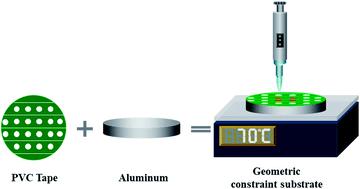当前位置:
X-MOL 学术
›
J. Anal. At. Spectrom.
›
论文详情
Our official English website, www.x-mol.net, welcomes your
feedback! (Note: you will need to create a separate account there.)
Stability and accuracy improvement of elements in water using LIBS with geometric constraint liquid-to-solid conversion
Journal of Analytical Atomic Spectrometry ( IF 3.1 ) Pub Date : 2020-03-06 , DOI: 10.1039/c9ja00418a Shixiang Ma 1, 2, 3, 4 , Yun Tang 1, 2, 3, 4 , Yuyang Ma 1, 2, 3, 4 , Feng Chen 1, 2, 3, 4 , Deng Zhang 1, 2, 3, 4 , Daming Dong 4, 5, 6, 7 , Zhenzhen Wang 4, 8, 9, 10 , Lianbo Guo 1, 2, 3, 4
Journal of Analytical Atomic Spectrometry ( IF 3.1 ) Pub Date : 2020-03-06 , DOI: 10.1039/c9ja00418a Shixiang Ma 1, 2, 3, 4 , Yun Tang 1, 2, 3, 4 , Yuyang Ma 1, 2, 3, 4 , Feng Chen 1, 2, 3, 4 , Deng Zhang 1, 2, 3, 4 , Daming Dong 4, 5, 6, 7 , Zhenzhen Wang 4, 8, 9, 10 , Lianbo Guo 1, 2, 3, 4
Affiliation

|
Poor spectral stability and low detection accuracy have limited the development of laser-induced breakdown spectroscopy (LIBS) for use in liquid analysis. A simple and fast new liquid pretreatment method, named geometric constraint liquid-to-solid conversion (GCLSC), was used in sample pretreatment for LIBS to simultaneously improve the spectral stability and detection accuracy. An aluminum (Al) target was used as a substrate. Boron (B) and chromium (Cr) in aqueous solution were determined using LIBS with GCLSC. The results showed that the spectral stability and detection accuracy of LIBS in liquid analysis could be improved by using GCLSC when compared with using filter paper assisted liquid-to-solid conversion (FPLSC) and unconstrained direct liquid-to-solid conversion (UDLSC). The relative standard deviation (RSD) values of B and Cr from the GCLSC method were 6.8% and 4.6%, respectively. The root-mean-square error of cross validation (RMSECV) values of B and Cr for GCLSC were 2.09 mg L−1 and 1.63 mg L−1, respectively. The experimental results demonstrated that the GCLSC method is promising for improving the stability and accuracy of LIBS quantitative analysis in liquid detection.
中文翻译:

使用具有几何约束的液固转换的LIBS提高水中元素的稳定性和准确性
光谱稳定性差和检测精度低,限制了用于液体分析的激光诱导击穿光谱法(LIBS)的发展。LIBS的样品预处理中使用了一种简单快速的新型液体预处理方法,称为几何约束液固转换(GCLSC),以同时提高光谱稳定性和检测精度。铝(Al)靶用作衬底。使用LIBS和GCLSC测定水溶液中的硼(B)和铬(Cr)。结果表明,与使用滤纸辅助的液-固转化(FPLSC)和无约束的直接液-固转化(UDLSC)相比,使用GCLSC可以提高LIBS在液体分析中的光谱稳定性和检测精度。GCLSC方法测得的B和Cr的相对标准偏差(RSD)值分别为6.8%和4.6%。GCLSC的B和Cr交叉验证(RMSECV)值的均方根误差为2.09 mg L-1和1.63 mg L -1。实验结果表明,GCLSC方法有望提高LIBS定量分析在液体检测中的稳定性和准确性。
更新日期:2020-03-06
中文翻译:

使用具有几何约束的液固转换的LIBS提高水中元素的稳定性和准确性
光谱稳定性差和检测精度低,限制了用于液体分析的激光诱导击穿光谱法(LIBS)的发展。LIBS的样品预处理中使用了一种简单快速的新型液体预处理方法,称为几何约束液固转换(GCLSC),以同时提高光谱稳定性和检测精度。铝(Al)靶用作衬底。使用LIBS和GCLSC测定水溶液中的硼(B)和铬(Cr)。结果表明,与使用滤纸辅助的液-固转化(FPLSC)和无约束的直接液-固转化(UDLSC)相比,使用GCLSC可以提高LIBS在液体分析中的光谱稳定性和检测精度。GCLSC方法测得的B和Cr的相对标准偏差(RSD)值分别为6.8%和4.6%。GCLSC的B和Cr交叉验证(RMSECV)值的均方根误差为2.09 mg L-1和1.63 mg L -1。实验结果表明,GCLSC方法有望提高LIBS定量分析在液体检测中的稳定性和准确性。









































 京公网安备 11010802027423号
京公网安备 11010802027423号